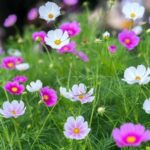Gardening ideas for assisted living are not only a source of joy and relaxation but also offer numerous benefits for residents in such communities. Engaging in gardening activities can contribute to physical exercise, mental stimulation, emotional well-being, and social interaction among seniors. The act of nurturing plants and watching them grow can bring a sense of accomplishment and purpose to individuals living in assisted care facilities.
For elderly individuals, setting up raised garden beds specially designed for their needs is essential. These accessible beds allow seniors to enjoy gardening without having to bend down or kneel on the ground, making the activity both comfortable and manageable. In addition to raised garden beds, investing in adaptive tools specifically tailored for elderly gardeners can further enhance their gardening experience by providing extra support and ease of use.
Container gardening is another fantastic option for creating vibrant gardens within assisted living communities. By utilizing containers like pots or hanging baskets, seniors can easily tend to their plants indoors or outdoors while adding beauty and greenery to their surroundings. This type of gardening allows residents with limited mobility or space constraints to still participate in the joys of cultivating plants.
Raised Garden Beds
Gardening is not only a popular activity but also a therapeutic and beneficial one for seniors in assisted living communities. It provides them with a sense of purpose, physical activity, mental stimulation, and the opportunity to connect with nature. One great way to make gardening more accessible for seniors is through raised garden beds. These beds are elevated, making it easier for residents to plant, maintain, and harvest their favorite fruits, vegetables, and flowers without having to bend or kneel.
Setting up raised garden beds for seniors in assisted living can be a simple yet effective way to promote their overall well-being. Here are some steps on how to create accessible and easy-to-use raised garden beds:
1. Choose the right location: Make sure the raised garden beds are placed in an area with ample sunlight, access to water, and close proximity to the residents.
2. Build or purchase raised garden bed kits: There are many options available for pre-made raised garden bed kits that are easy to assemble and come in various sizes.
3. Consider adding ramps or rails: To make it even more accessible for seniors with mobility issues, consider installing ramps or rails around the raised garden beds for additional support.
By implementing these simple strategies, gardening can become an enjoyable and fulfilling activity for seniors living in assisted care facilities. It offers them a sense of independence, accomplishment, and connection to the natural world right at their doorstep.
Overall, incorporating gardening ideas for assisted living residents can greatly enhance their quality of life and provide numerous physical and mental health benefits. From building raised garden beds to selecting low-maintenance plants suitable for seniors to grow, there are plenty of ways to make gardening both enjoyable and accessible for elderly individuals in assisted living communities.
Whether it’s creating container gardens, exploring sensory gardens, or participating in interactive gardening workshops tailored to their needs, there is no shortage of opportunities for seniors to engage in meaningful outdoor activities that promote well-being and happiness.
Adaptive Tools
Benefits of Adaptive Tools
Adaptive tools play a crucial role in making gardening accessible and enjoyable for elderly gardeners living in assisted living communities. These specialized tools are designed specifically to address the physical limitations and challenges that seniors may face, such as arthritis or limited mobility. By using adaptive tools, residents can continue to engage in their love for gardening without putting strain on their bodies, ultimately improving their overall well-being and quality of life.
Types of Adaptive Tools
There are various types of adaptive tools available that cater to different needs and preferences of elderly gardeners. Some common examples include ergonomically designed trowels and pruners with easy-grip handles, long-handled tools to reduce bending and reaching, raised planters on wheels for easy movement around the garden, lightweight hoses with extendable wands for watering plants, and kneelers with handles for added stability while planting or weeding.
Each type of tool serves a specific purpose in enhancing the gardening experience for seniors by minimizing discomfort and maximizing independence.
Choosing the Right Tools
When selecting adaptive tools for assisted living residents, it is important to consider their individual needs and abilities. Consulting with occupational therapists or gardening experts can help determine which tools would be most beneficial for each resident based on their specific limitations.
Additionally, providing training sessions on how to properly use these tools can further empower seniors to take charge of their own gardening activities. With the right adaptive tools in hand, elderly gardeners can continue to nurture their green thumbs and enjoy all the therapeutic benefits that gardening has to offer within the assisted living setting.
Container Gardening
When setting up a container garden for assisted living residents, it is important to consider using lightweight containers that are easy to move around, especially for those with mobility issues. Opt for containers with proper drainage holes to prevent overwatering and root rot.
It’s also essential to choose appropriate potting mix that provides good drainage and nutrients for plant growth. Additionally, selecting plants that are well-suited for containers and require minimal maintenance can help ensure a successful container garden for seniors.
To make the most out of container gardening in assisted living communities, consider incorporating a variety of plants that offer different colors, textures, and scents. Herbs like basil, mint, and thyme are not only easy to grow but also provide aromatherapy benefits for residents.
Colorful flowers such as marigolds, pansies, or petunias can add visual appeal to the garden while attracting pollinators like butterflies and bees. By creating a diverse and visually stimulating container garden, seniors in assisted living can enjoy the therapeutic benefits of nature right at their fingertips.
Sensory Gardens
One key aspect of sensory gardens is the selection of plants that appeal to different senses. For example, fragrant herbs like lavender or rosemary can engage the sense of smell, while velvety lamb’s ear leaves can provide a tactile experience. Incorporating colorful flowers such as marigolds or pansies adds visual interest, while wind chimes or bird feeders introduce auditory stimulation. Additionally, edible plants like strawberries or mint offer the opportunity for tasting experiences in the garden.
Incorporating elements like raised planters at different heights and textures of pathways can make sensory gardens more accessible for elderly residents with mobility challenges or wheelchair users. Providing comfortable seating areas strategically placed throughout the garden allows seniors to relax and enjoy the sights, scents, and sounds of nature. Overall, sensory gardens offer a holistic approach to therapy by engaging multiple senses simultaneously while fostering a connection to the natural world.
| Sensory Gardens Benefits | Key Features |
|---|---|
| Improves mood and reduces stress | Selection of plants engaging all senses |
| Promotes relaxation and well-being | Accessible design for seniors with mobility challenges |
| Offers holistic therapeutic approach | Comfortable seating areas for relaxation |
Easy-to-Grow Plants
Gardening is not only a pleasurable hobby but also offers numerous benefits for assisted living residents. For seniors, engaging in gardening activities can provide physical exercise, mental stimulation, and a sense of accomplishment. Choosing the right plants that are easy to grow and maintain is essential to ensure that elderly gardeners can enjoy their gardening experience to the fullest.
When it comes to selecting plants for seniors to grow, it is important to prioritize low-maintenance varieties that require minimal care and attention. Some great options include herbs like mint, basil, and chives, which not only add flavor to meals but are also relatively easy to grow. Succulents such as aloe vera and jade plants are excellent choices as they are resilient and drought-resistant, making them ideal for seniors who may forget to water their plants regularly.
Furthermore, flowering perennials like lavender and coneflowers are beautiful additions to any garden and typically come back year after year with minimal effort. These plants not only attract pollinators like bees and butterflies but also add color and fragrance to the garden space. By choosing a mix of easy-to-grow plants like herbs, succulents, and flowering perennials, assisted living residents can create a vibrant garden that brings joy and beauty to their living environment.
| Easy-to-Grow Plant | Description |
|---|---|
| Mint | A fragrant herb that is easy to grow in various conditions |
| Aloe Vera | A succulent plant known for its healing properties and low maintenance requirements |
| Lavender | A flowering perennial with aromatic blooms that attracts pollinators |
Garden Workshops
When it comes to creating engaging and enjoyable activities for assisted living residents, gardening workshops can be a fantastic option. These workshops not only provide a therapeutic and relaxing environment but also offer opportunities for socialization, learning, and creativity.
Herb Gardening Workshop
One idea for an interactive gardening workshop is focusing on herb gardening. Herbs are versatile plants that can be grown in small spaces like windowsills or containers, making them ideal for seniors living in assisted facilities. The workshop can involve teaching residents about different types of herbs, how to plant and care for them, as well as creative ways to use them in cooking and crafting.
Flower Arranging Workshop
Another fun and creative workshop idea is a flower arranging session. Residents can learn the basics of floral design, including color theory, texture mixing, and arrangement techniques. This hands-on workshop allows seniors to express their creativity while also enjoying the beauty of fresh flowers. It’s a great way to brighten up living spaces and add a touch of nature indoors.
Garden Craft Workshop
For those who enjoy working with their hands, a garden craft workshop can be both enjoyable and rewarding. This workshop can involve creating DIY plant markers, bird feeders, terrariums, or other garden-related crafts. It’s a great way for residents to exercise their fine motor skills while also adding personal touches to their gardening endeavors.
Overall, gardening workshops tailored for assisted living residents provide not only physical benefits but also emotional and mental stimulation. They encourage residents to connect with nature, explore new hobbies, and bond with fellow participants in a nurturing environment. With the right guidance and support from staff members or volunteers, these workshops can truly enhance the overall quality of life for seniors in assisted living communities through the joy of gardening.
Seasonal Gardening Activities
As we conclude this guide on gardening ideas for assisted living, it’s important to underscore the value of seasonal gardening activities for seniors. Keeping residents engaged in gardening throughout the year not only provides a sense of purpose and enjoyment but also offers numerous health benefits. Seasonal gardening activities can help promote physical activity, mental well-being, and social interaction within assisted living communities.
From spring planting to winter harvest, there are endless opportunities to engage seniors in various gardening projects. Springtime can bring the joy of planting colorful flowers and vegetables, while summer offers the chance to tend to thriving gardens and enjoy outdoor gatherings.
As fall arrives, residents can partake in harvesting fruits and vegetables, as well as preparing the garden for winter. Even during the colder months, indoor gardening projects like growing herbs or maintaining houseplants can keep seniors connected to nature all year long.
By incorporating seasonal gardening activities into assisted living programs, staff members can foster a sense of community and belonging among residents. Whether it’s organizing a fall harvest festival or hosting a winter wreath-making workshop, these initiatives not only enhance the physical environment but also contribute to the overall well-being of individuals living in assisted care facilities.
Gardening truly has the power to create meaningful experiences and lasting memories for seniors, enriching their lives in more ways than one.
Frequently Asked Questions
What Type of Garden Is Easiest for Elderly People to Use?
Raised bed gardens are often the easiest type for elderly people to use. These beds elevate the gardening area, making it easier to reach plants without having to bend or kneel as much. Additionally, raised beds can be customized in height for accessibility.
How Can Gardening Help Older Adults?
Gardening can benefit older adults in various ways. It provides gentle physical exercise, improves mobility and flexibility, reduces stress, and promotes mental well-being. Engaging in gardening activities can also increase social interaction and a sense of purpose.
How Do You Make a Garden Club?
To make a garden club, start by gathering individuals who share an interest in gardening. Define the goals and activities of the club together, such as organizing group plantings or sharing tips and advice. Establish regular meetings or events to foster a sense of community among members.

Welcome to my gardening blog! I am passionate about plants and enjoy sharing my knowledge and experiences with others. In this blog, I will write about everything related to gardening, from tips on how to get started to updates on my own garden projects.





